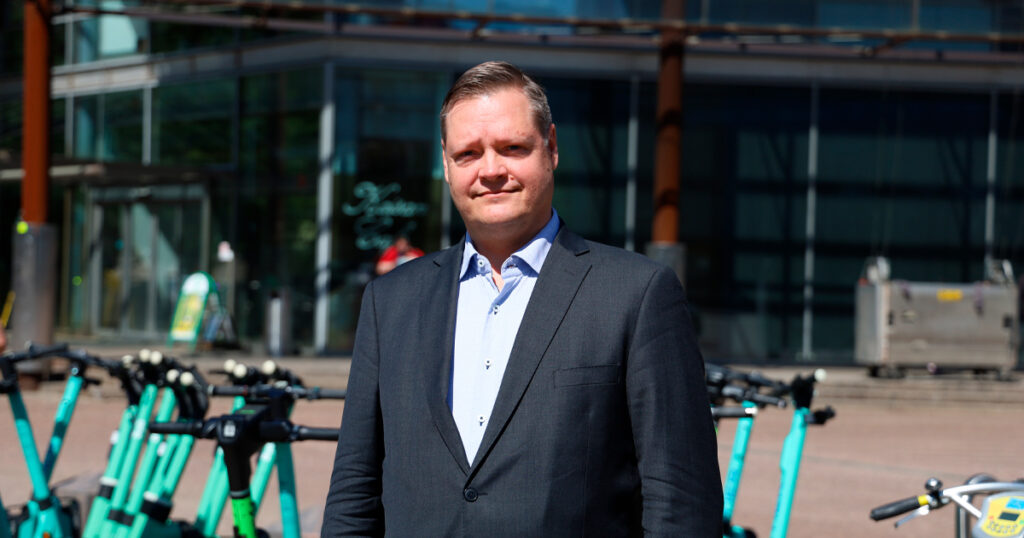
- Finnish motor insurance celebrates its 100th anniversary.
- Pressing issues in the motor insurance sector include the treatment of new vehicles such as electric scooters and the management of data generated by modern devices.
- Finnish consumers are poorly aware of what statutory motor liability insurance covers, shows a survey by the Finnish Motor Insurers’ Centre.
- For Finns, the most important feature of motor insurance is that it also covers all damage to the innocent party’s property.
In the early 2000s, Finnish Motor Insurers’ Centre (LVK) Director Janne Jumppanen and a team of experts were in South Africa showcasing the Finnish motor liability insurance system. South Africa was designing its own scheme and had been researching the motor insurance schemes of different countries on the lookout for new ideas. This research found the two best systems to be the Finnish and the German ones, and the country began to build its own scheme on them.
Finnish motor insurance celebrates its 100th anniversary
What are the topical issues in Finnish motor liability insurance in 2023? Interviewed by Finance Finland, Jumppanen brings up new ways of getting about: the world is turning, and all kinds of new vehicles that were previously not considered as objects of insurance are proliferating in the market and on the streets.
“Later this year, we’ll be getting new regulation that specifies what kinds of electric scooters must be insured, for example. Weight and maximum speed are the key factors. Food delivery robots are another new phenomenon. How should their motor liability insurance be managed?” says Jumppanen.
In addition to the new vehicles and gadgets, the ever-growing amount of data they collect is another major concern. How can the data be utilised in insurance, claim processes and accident investigation, and who is it owned by?
“The main principle is that all decisions on the use of data collected by a vehicle are made by the owner or driver of the vehicle. It’s up to them to decide whether the data is disclosed to insurers or repair shops, for example. The rules of data use are constantly under debate in Brussels. In the insurance sector’s opinion, there is a need for regulation.”
Road accidents are not solely an urban phenomenon
Finnish consumers are poorly aware of what statutory motor liability insurance covers, shows a recent survey published by the Motor Insurers’ Centre. According to the survey, only half of Finns are aware that a trailer also needs to be insured under motor liability insurance. The insurance requirements of electric bikes and scooters were even less familiar, known to only one in five respondents.
Jumppanen is not surprised by the survey results.
“A car must be insured even if it’s used only on a field or on forest roads. Accidents can happen anywhere, not just in built-up, populated areas. Every uninsured accident is a waste. People should be better informed of the legal requirements of insurance.”
Finns value the fact that Finnish motor liability insurance also covers all personal injuries and damages to the innocent party. And rightly so: the coverage of the Finnish scheme is one of the best in the world.
Road fatalities on the same level as in 1940
The Finnish motor liability insurance scheme and the Finnish Motor Insurers’ Centre are celebrating their 100th anniversary this year. The Motor Insurers’ Centre’s predecessor, the Finnish Automobile Tariff Association (Suomen Automobiilitariffiyhdistys), was established in early October 1923. Today, the Centre’s members include all insurance companies that grant motor liability insurances in Finland.
Motor liability insurance is one of the Finnish success stories. The number of road fatalities is currently on the same level as in the 1940s ‒ despite the fact that the number of vehicles and kilometres driven per year have since multiplied many times over. One of the cornerstones of Finnish road safety is its internationally acclaimed motor insurance scheme.
“As for what elements of the Finnish scheme ended up being adopted into the South-African scheme, I can’t say for sure. But our local colleagues did point out that the Finnish level of compensation was way too high: they feared similar compensations would encourage people to throw themselves under a car”, notes Jumppanen.
Looking for more?
Other articles on the topic

Customers are already protected if an insurance company fails – An EU-wide insurance guarantee scheme is not needed

Financial sector’s VAT treatment needs an overhaul, but the Finnish pension system must not be hampered with added tax burden

No insurer will insure a house on fire – California wildfires embody the growing risks of climate change

Data is the raw material of insurance – unwise limits on its use would weaken insurance cover
